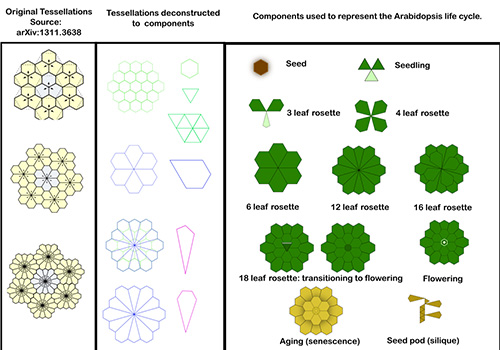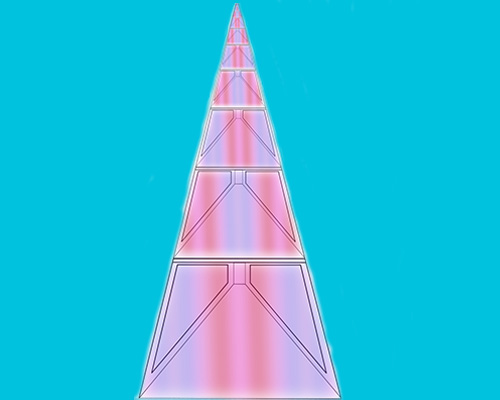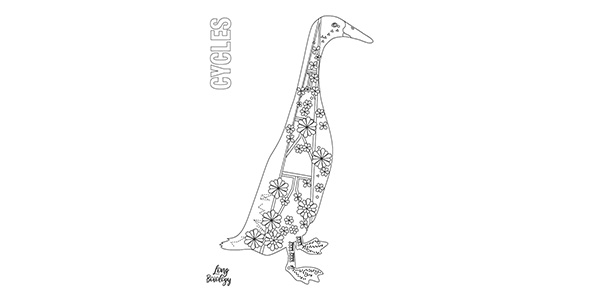
Cycles
This duck was created by Gina Vong, Kayla McCarthy, Daphne Ezer, Will Clayton and Ethan Redmond.
Our design was inspired by the applied plant sciences research in the Department of Biology that attempts to unravel how plants sense their environments, to control their growth and development in order to improve agriculture. This design highlights how our fundamental understanding of genes and plant development will help us produce a more sustainable food system.
The work of M.C. Escher inspired the groundwork for the composition of our design because of his imaginative use and mastery of tessellations, perspective and transitions. His tessellations are often transforming and in transitional states, moving from simple geometric shapes into more realistic, complex and dimensional organisms.
In the foreground, the life cycle of Arabidopsis thaliana (thale cress; the model plant) develops from seed to flowers and eventually produces its own seeds. In homage to mathematical biology, our design uses tessellating triangles and hexagons to create ‘rosette’ patterns.
The Arabidopsis plants weave their way through the infinite shelves of a vertical farm that runs through the duck design.

Arabidopsis plant life cycle, created with triangles and hexagons.
Vertical farms are indoor farms that produce fresh, local food in urban centres. The Department of Biology has a number of collaborative research projects with vertical farm industrial partners, working together to improve the efficiency, productivity and nutrient quality of crop production sustainably.
Escher’s ‘Other World’ mezzotint variation (1946) inspired the design of the vertical farm to be an endless elevator of shelves stretching off into a vanishing point. This represents the growth of vertical farms as an industry and great aspirations of vertical farms envisioned for the future.

A five layered vertical farm with M.C. Escher's "Other World" variant in mezzotint included (in pink and purple).
The design’s background is inspired by the Department’s work on chronobiology (life’s internal clock) and Escher’s ‘Day and Night’ woodcut (1938) and ‘Sky and Water I’ (1938), depicting night, day and the twilight transition between. By manipulating the day length and light quality in an indoor vertical farm, we can manipulate plant development to produce higher quality and more nutritious crops.
The faint hexagonal pattern in the day is another mathematical gesture which forms an abstract representation of clouds. The constellations are inspired by star maps, and adapted to represent clock gene networks, with the faint galaxy backdrop taken from a reconstruction of the stars on 14 December 2000, using Stellarium astronomy software.
We designed it using InkScape, as this allowed us to make fine adjustments to the tessellations and volley our design ideas as a team. The University of York Design and Print team printed the design onto a vinyl sticker that we could stick onto the duck. Then we painted some extra details and finishing touches on top.
Study with us
Make your own duck
Didn't get the chance to attend the Art Trail Festival of Ideas workshop?
You can still colour your own cycles duck and make it your own.
